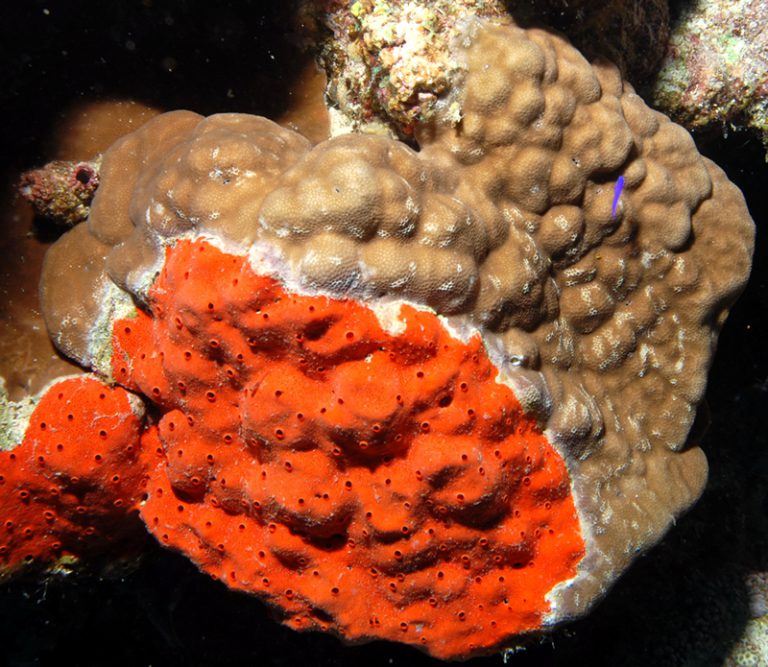 Official websites use .gov
A .gov website belongs to an official government organization in the United States. Official websites use .gov
A .gov website belongs to an official government organization in the United States. |
 Secure .gov websites use HTTPS
A lock or https:// means you’ve safely connected to the .gov website. Share sensitive information only on official, secure websites. Secure .gov websites use HTTPS
A lock or https:// means you’ve safely connected to the .gov website. Share sensitive information only on official, secure websites. |
Solutions today for reefs tomorrow
Home » Coral Disease » Characterized Diseases » Growth Anomalies (GA)

Coral skeletal anomalies resulting from abnormal development of skeleton and associated tissue. Deposition of exoskeleton is altered and morphological features differ markedly from those of the surrounding skeleton and tissue in shape, presence of polyps, size of tissue and skeletal elements, color of tissue, and rate of growth. Can develop on any region of the colony, lesions expand outward and may coalesce. Up to 20-cm in diameter.
Overgrowth and competition
Presence of sponge (L-M), encrusting gorgonian (N), tunicate (O-P), hydrozoan coral (Q), algae (R) or other epibiont on colony surface and progressively overgrowing tissue; may be associated with bioerosion of skeleton (L-M).
The CDHC is a network of scientists, managers, and agency representatives devoted to understanding coral health and disease.
Funding support provided by NOAA CRCP
Web hosting by NOAA NCCOS
Coral Disease and Health Consortium
Hollings Marine Laboratory
331 Fort Johnson Road
Charleston, SC 29412 USA
Email: cdhc.coral@noaa.gov